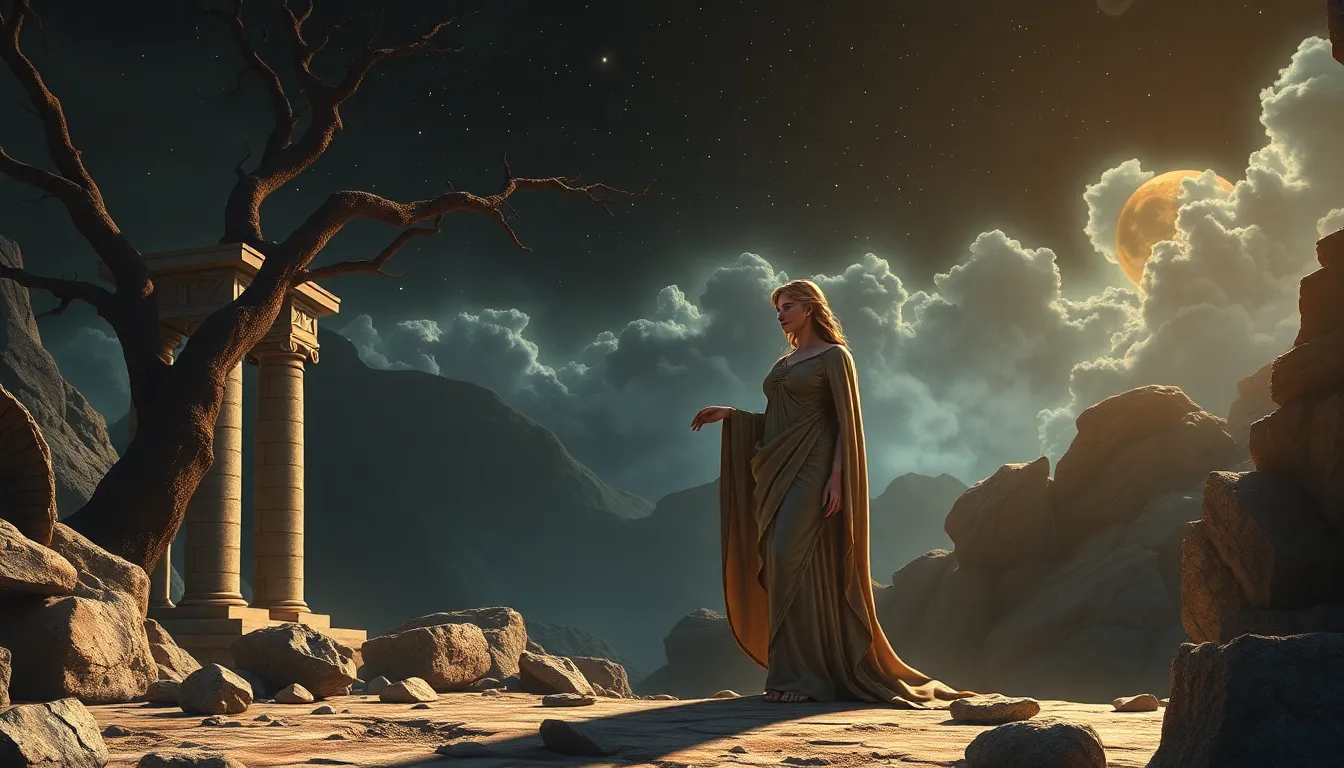The Significance of Hope in Pandora’s Story: A Mythological Analysis
I. Introduction
Pandora’s myth is one of the most renowned tales in Greek mythology, illustrating the complexities of human existence through the story of a woman whose curiosity led to the release of all the evils of the world. This narrative serves not only as a cautionary tale but also as a profound commentary on the nature of hope, which is intricately woven into the fabric of human experience.
Throughout mythology, hope plays a crucial role as a beacon in times of despair, offering solace and strength to individuals facing adversity. This article aims to analyze the concept of hope within the context of Pandora’s story, exploring its significance and implications for both ancient and contemporary audiences.
II. The Origins of Pandora’s Myth
The origins of Pandora’s myth can be traced back to ancient Greece, where it was used to explain the existence of suffering and evil in the world. According to Hesiod, a prominent ancient Greek poet, Pandora was the first woman created by the gods, specifically designed as a punishment for humanity due to Prometheus’s theft of fire.
Key figures in this myth include:
- Pandora: The first woman, endowed with gifts from the gods.
- Prometheus: The Titan who defied Zeus by giving fire to humanity.
- Zeus: The king of the gods, who orchestrated Pandora’s creation as retribution.
Pandora was given a jar (often referred to as a box) containing all the evils of the world. Her curiosity ultimately led her to open it, unleashing misery upon humanity.
III. The Unleashing of Evils
When Pandora opened the jar, she released a multitude of evils, including:
- Disease
- War
- Famine
- Despair
The impact of these unleashed evils was profound, as humanity was suddenly afflicted with suffering and chaos. This act symbolizes the fragility of human existence and the inevitable presence of hardship in life.
The chaos and suffering depicted in Pandora’s story serve as metaphors for the darker aspects of human experience, emphasizing the idea that while suffering is a part of life, it is often accompanied by the possibility of hope.
IV. The Role of Hope
Amidst the turmoil unleashed by Pandora, hope remained trapped at the bottom of the jar. This final element is crucial to the narrative, as it signifies the enduring strength of hope in the face of overwhelming despair.
In ancient texts, hope is often portrayed as a double-edged sword:
- It provides comfort and encouragement during difficult times.
- It can also lead to despair when unrealistic expectations are set.
The duality of hope in Pandora’s story highlights its complex nature; while it can inspire resilience, it can also create a sense of longing that may remain unfulfilled.
V. Mythological Perspectives on Hope
Pandora’s myth is not unique in its exploration of hope. Other mythological narratives also delve into this theme, such as:
- The story of Orpheus and Eurydice, where hope drives Orpheus to attempt to retrieve his beloved from the underworld.
- The tale of Sisyphus, where hope is found in the struggle itself, despite the futility of his task.
In ancient Greek philosophy, hope was discussed by thinkers like Aristotle, who acknowledged its role in motivating human behavior. The influence of Pandora’s story has also permeated later mythological narratives, reinforcing the idea that hope, even amid despair, is a fundamental aspect of the human condition.
VI. Psychological Implications of Hope
From a psychological perspective, hope is recognized as a vital construct that influences an individual’s ability to cope with challenges. It is associated with:
- Resilience: The capacity to recover from setbacks.
- Coping mechanisms: Strategies individuals use to manage stress and adversity.
Modern interpretations of hope, particularly through the lens of Pandora’s story, suggest that hope can serve as a powerful motivator, enabling individuals to navigate life’s difficulties with the belief that improvement is possible.
VII. Cultural Relevance of Hope Today
The legacy of Pandora’s myth continues to resonate in contemporary culture, influencing various forms of artistic expression, including literature, art, and popular media. Works inspired by Pandora often explore themes of hope and despair, echoing the timeless relevance of her story.
In today’s context, hope can be seen as a crucial element in addressing modern challenges, such as:
- Social injustice
- Environmental crises
- Mental health issues
Lessons from Pandora’s story remind us that while suffering is a part of life, hope can provide the strength needed to overcome adversity.
VIII. Conclusion
In summary, the significance of hope in Pandora’s story is profound, serving as a reminder of its essential role in the human experience. Despite the evils unleashed into the world, hope remains a steadfast companion, offering solace and strength amid despair.
As we navigate our own challenges, embracing hope can empower us to face adversity with resilience and determination. Ultimately, Pandora’s myth teaches us that hope is not merely an illusion; rather, it is a vital force that sustains us through the trials of life.
Let us carry the lessons of Pandora’s story into our lives, fostering hope in ourselves and others as we confront the complexities of existence.




